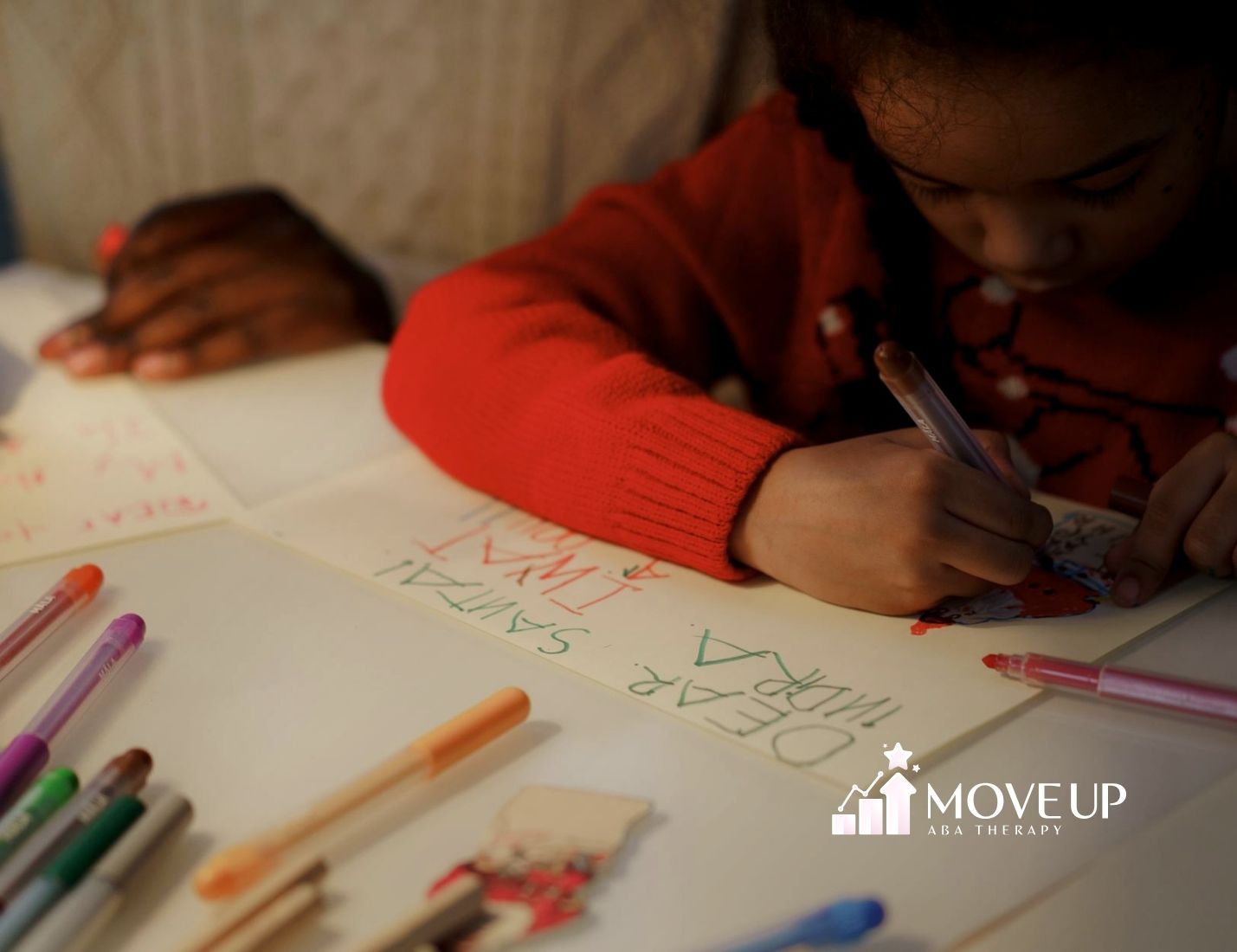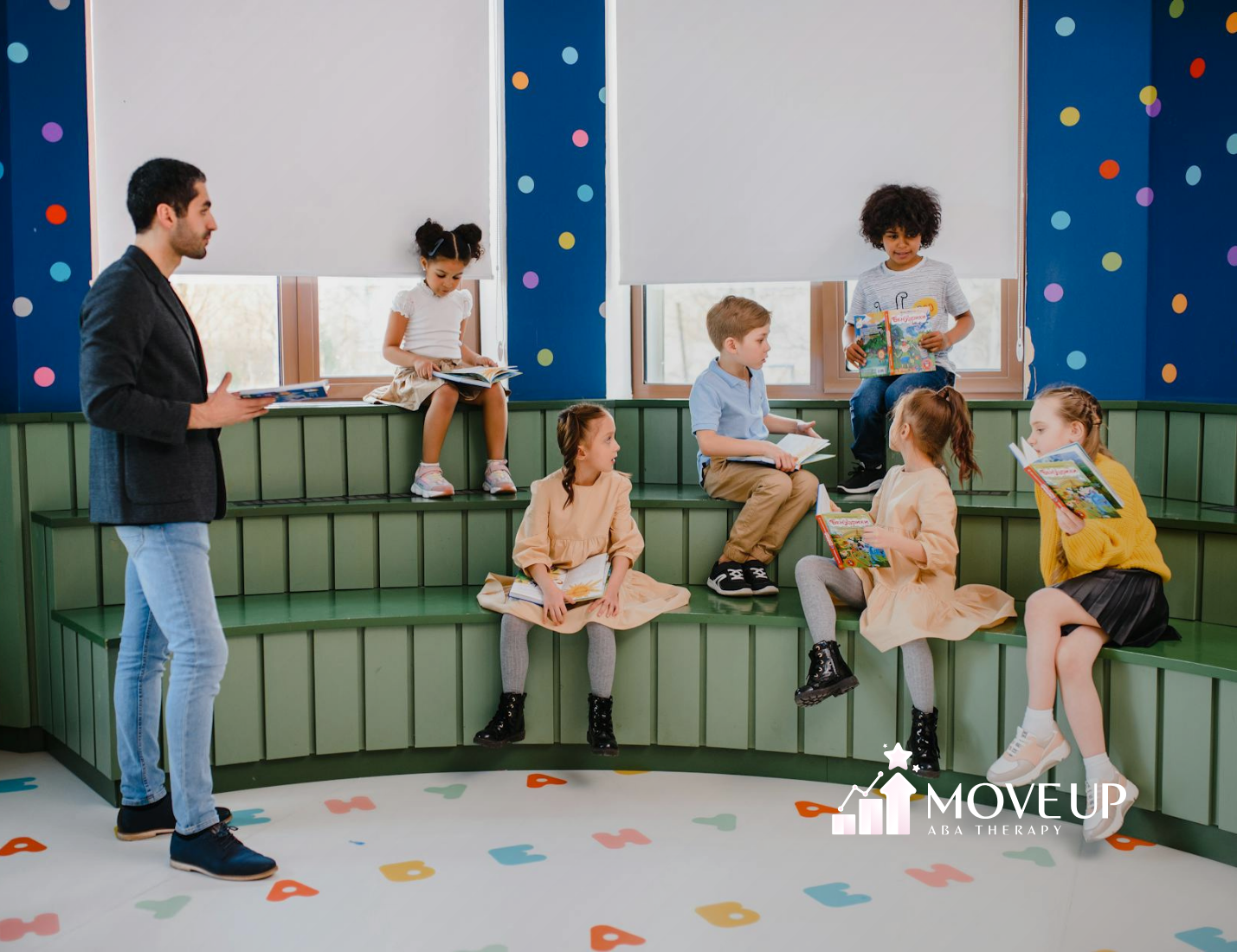Key Highlights
- Applied Behavior Analysis (ABA) therapy uses proven techniques to help children acquire new skills, improve social interactions, and reduce challenging behaviors.
- Individualised session plans tailored to the child’s needs ensure effective ABA therapy sessions.
- Essential preparations, such as creating a controlled setting and gathering materials, optimise learning during therapy sessions.
- Techniques like Discrete Trial Training (DTT) and Natural Environment Training (NET) help children build skills in structured and everyday activities.
- Continuous assessment and adaptive strategies are key to tracking progress and making necessary adjustments to treatment plans.
Transitioning to understanding ABA’s fundamentals can establish a solid foundation for running impactful therapy sessions.
Introduction
If ABA therapy is new to you, it’s important to see how it can change lives. ABA therapy sessions are well-organized treatment plans based on behavior analysis methods. These proven ways help children with autism spectrum disorder and other developmental issues improve their communication, social skills, and overall quality of life. By focusing on each child’s needs and promoting positive behavior, ABA therapy encourages personal growth and meaningful changes. In the sections that follow, we will provide a step-by-step guide to successful ABA sessions.
Understanding the Basics of ABA
Applied Behavior Analysis, or ABA, is a type of therapy that helps us understand behavior and how outside factors impact it. The key idea is that people can learn and change behaviors through reinforcement and specific teaching methods. Sometimes, ABA stands out because it uses a structured approach. This means it relies on data to personalize sessions for each person.
This method focuses on two main things: learning new skills and reducing tough behaviors. ABA therapists break down tasks into smaller steps. They use techniques like prompting and positive reinforcement to help bring about real change. Let’s explore the main ideas and important things that make ABA special.
Defining ABA and Its Core Principles
Applied Behavior Analysis (ABA) is based on the science of behavior and learning. Its main goals are to understand how behavior interacts with the environment. This helps to bring about positive changes. ABA is especially helpful for people on the autism spectrum. It teaches important actions that can improve daily life.
A key part of ABA is using reinforcement techniques, like positive reinforcement and prompting. Positive reinforcement rewards good behaviors with immediate rewards, such as tokens or praise. Prompting gives guidance to help people do the targeted behavior correctly.
These principles focus not only on individual actions but also on being consistent in using techniques to make real changes. By using these core principles, ABA therapists create plans that help improve communication, social skills, and self-help abilities. This fosters a better future for individuals.
The Role of Behavioral Analysis in ABA
Behavior analysis is very important in ABA therapy. It helps to understand and assess actions. By watching how behavior changes with different stimuli and environments, therapists can find patterns. This helps them create good intervention strategies.
This analysis supports ABA principles. It lets therapists set measurable goals that meet individual needs. Therapists teach appropriate behaviors, help reduce disruptive actions, and keep track of progress using data collection materials like timers and sheets.
In short, behavior analysis makes ABA therapy organized and focused on results. It helps therapists make smart decisions and stay on track with treatment goals. This supports improvement during therapy sessions and in everyday life. Before each session begins, therapists do important preparations to ensure a structured and controlled environment.
Essential Preparations for an Effective ABA Session
To get the best results from an ABA therapy session, preparation is very important. Therapists should look over the treatment plan and past progress reports. This helps them set clear goals and decide which target behaviors to focus on. It makes picking teaching methods and rewards much easier.
Setting up a controlled setting is also vital. By cutting down on distractions and arranging materials like reinforcers and learning tools, therapists create a space for success. A well-organized workspace keeps the attention on skill-building and positive reinforcement techniques. Let’s see how to effectively set up this type of environment.
Setting Up the Environment for Success
The physical space is very important for a good ABA session. It needs to be organized and free from distractions so that kids can concentrate. Quiet areas with little noise and interruptions make the best environment for learning tasks.
Using preferred reinforcers and fun materials keeps the child motivated during sessions. Whether it’s visual aids or sensory items, having these things ready helps kids easily shift into activities. Providing tactile elements boosts engagement and leads to better therapy results.
Besides setting up materials, keeping the therapy area consistent and sticking to daily routines helps the children feel comfortable. When kids are secure in their space, they can tackle challenging tasks and work on important goals more easily. It’s also necessary to have essential tools and resources nearby to make sessions more effective.
Essential Tools and Materials Needed
Having the right materials is very important for running good ABA sessions. Tools like learning aids and reinforcers help keep kids interested and focused on their tasks. These tools also help in learning new skills.
Data collection is just as important. To track progress accurately, you need items like sheets, timers, pens, or digital tools such as tablets. When you use fun reinforcers from preference checks, like toys or snacks, the therapy sessions become more enjoyable.
Here’s a list of essential ABA tools:
| Tool Type | Examples | Purpose |
| Data Collection Materials | Timers, tracking sheets, digital platforms | Recording progress and determining phases |
| Learning Aids | Visual cards, matching sets, sorting objects | Teaching skills like communication and sorting |
| Reinforcers | Favourite toys, snacks, sensory items | Encourages positive behavior through rewards |
By organizing these tools well, therapists make their sessions easier while increasing efficiency. Once the session setup is done, the next step is to plan the activities.
Structuring Your ABA Session
Well-organized ABA sessions guide us towards success. Splitting them into clear phases helps therapists focus on different parts of the intervention. This starts from the initial assessment to activities that build skills.
Having a steady flow of activities helps with emotional regulation and keeps the child involved. This method makes sure that each part of the ABA therapy process meets measurable goals and follows the overall treatment plan. Let’s explore the specific phases and methods for setting up the sessions.
Key Phases of an ABA Session
ABA sessions usually begin with warm-up activities. This helps build a good relationship and establish control for teaching. These early tasks may include simple things like matching or coloring. They create a friendly and easy-going place for the child.
After that, it’s time for the main teaching part. Therapists break down complex skills into smaller, manageable steps. They use methods like Discrete Trial Training (DTT). Positive reinforcement keeps the child engaged and helps them learn better during tough activities.
The session ends with generalization exercises. Therapists use methods like Natural Environment Training (NET) to help the child use what they’ve learned in real-life situations. This makes the ABA therapy process more complete. Good engagement strategies are essential in all these phases.
Techniques to Foster Engagement and Learning
In ABA therapy, it is important to keep the child engaged. This is key for a good learning experience. To keep them engaged, you can include the child’s interests and favorite rewards in activities.
Teaching methods that encourage participation work really well. Techniques like pairing neutral things with rewards or giving regular breaks help improve focus. Doing structured activities can mix learning with play. This makes therapy sessions more fun.
Good methods include:
- Using visual aids to make tasks easier
- Using games or activities led by the child to encourage learning
- Giving verbal praise right after good behavior
- Allowing short breaks to keep up the excitement
By using these methods, therapists can make children more responsive. This ensures that each session is a successful learning journey. After organizing sessions, using advanced ABA techniques helps with skill acquisition.
Implementing Specific ABA Techniques
Using effective methods like Discrete Trial Training and Natural Environment Training can change therapy sessions into places for learning new skills. These methods help teach important abilities both in organized settings and in everyday life.
When therapists match these techniques with the child’s treatment goals and behavioral evaluations, they make chances for valuable learning. Let’s look at these methods and how they affect the aba therapy process.
Integrating Discrete Trial Training (DTT)
Incorporating discrete trial training (DTT) into ABA therapy sessions is important. It helps in gaining new skills and reaching specific goals. This method lets behavior technicians break down complex skills into smaller, manageable steps. It provides clear and simple instructions. By using positive reinforcement, practitioners can make learning fun for children. They also track progress through good data collection. DTT creates a structured environment that helps in controlling instruction. This makes it easier to find and encourage target behaviors. In the end, using DTT makes ABA therapy more effective and supports the child’s growth.
Utilizing Natural Environment Training (NET)
Integrating natural environment training (NET) into ABA therapy sessions can help children learn better. Using everyday activities makes learning more practical. Behavior technicians can improve a child’s communication skills and social interactions this way. This method also uses reinforcement in real-life situations. It helps children learn new skills that they can use outside of therapy.
When NET is part of a treatment plan, it tackles target behaviors in an organized manner. Including family members in these activities can boost the child’s progress. It creates a strong support system for ongoing development.
Monitoring Progress and Making Adjustments
Watching and recording changes in behavior during ABA therapy sessions can give us useful information about the child’s development. Looking at data helps us see what works well and what needs to change.
Making adjustments helps us meet specific goals and change our methods based on how the child learns. Being flexible is key to ensuring that therapy sessions support consistent progress and skill learning. Let’s look at why assessment and flexible strategies are important.
Importance of Continuous Assessment
Continuous assessment does more than just track progress. It helps to shape future sessions. Therapists use data sheets, video recordings, and observation logs to evaluate how behaviors and skills are developing.
Insights from this data help to find areas that need attention. This allows therapists to adjust their teaching methods or reinforcement strategies. For instance, if a data sheet shows more vocalizations, therapists can improve communication exercises in upcoming ABA sessions.
Regular assessments create a sense of accountability in the therapy process. They make sure that the process changes as the child’s needs grow. The next step is to adapt interventions based on the responses received.
Adapting Strategies Based on Learner Response
Learners respond differently to intervention techniques. This is why flexibility is very important. Using adaptive strategies helps to keep sessions personalized. It includes changing prompts and adjusting the types of rewards or the pace of the sessions based on how engaged the child is.
Therapists also take time to review treatment plans regularly. If a learner loses interest in certain rewards, they will find new ones that keep motivation high. If a child does well on specific tasks, therapists will give them harder activities to work on.
These personalized adjustments in ABA therapy create valuable learning chances. They help learners make progress toward measurable goals and avoid getting stuck. To sum up, structured interventions improve the outcomes of ABA therapy.
Conclusion
Running a great ABA session needs careful planning and a strong understanding of the rules that guide Applied Behavior Analysis. It’s important to set up the space, use specific techniques, and keep track of progress. Each step is key for getting good results for your learners. By focusing on engagement and changing strategies based on how individuals respond, you can create a friendly atmosphere that helps learning and growth. Remember, good ABA sessions not only teach new skills but also help build strong relationships and boost confidence. For more tips and advice on running effective ABA sessions, feel free to contact us for a free consultation with our experts.
Frequently Asked Questions
What is the ideal duration for an ABA session?
ABA sessions last between 1 to 3 hours, depending on the child’s needs and focus. Therapists work with families to find the best session length that matches their treatment goals. Having shorter but regular sessions helps to create a good plan, which is important for the success of ABA therapy.
SOURCES:
https://my.clevelandclinic.org/health/treatments/25197-applied-behavior-analysis
https://www.bacb.com/about-behavior-analysis/
https://www.autismconnect.com/standard-treatments/conventional/applied-behavior-analysis-aba/what-are-the-materials-i-should-use-in-aba-therapy
https://asatonline.org/for-parents/learn-more-about-specific-treatments/applied-behavior-analysis-aba/aba-techniques/
https://psychcentral.com/autism/continuous-measurement-aba







